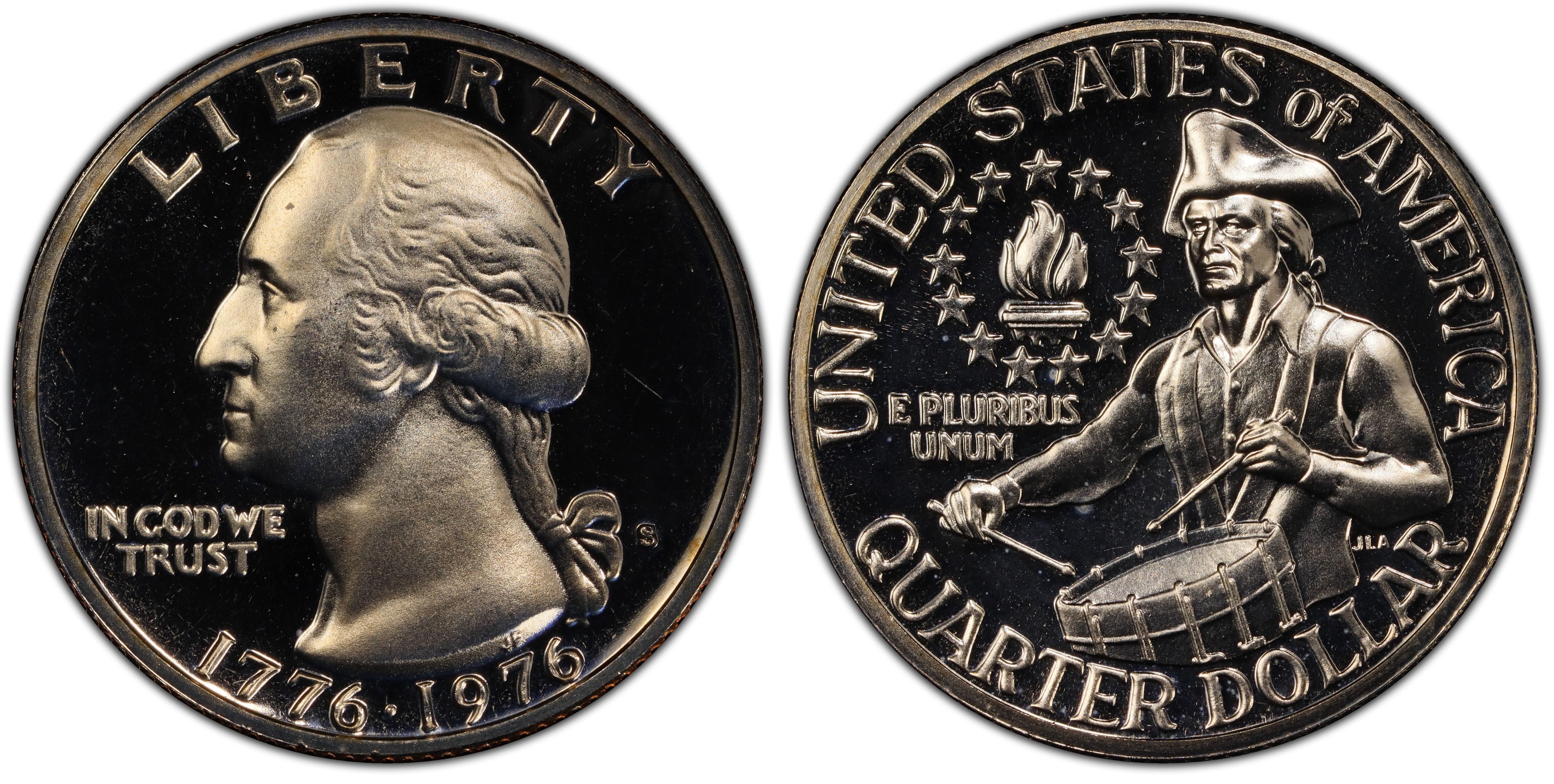Introduction:
The Bicentennial Quarter, minted in 1975 and 1976, is a special edition of the Washington quarter. Commemorating the 200th anniversary of the United States’ independence, these quarters feature a unique reverse design with a colonial drummer. While many Bicentennial Quarters were produced, certain versions are particularly rare and highly sought after by collectors. In this article, we’ll explore the top 5 rarest Bicentennial Quarters and their current market values, providing insights into what makes these coins so special and valuable.
1. 1976-S Silver Bicentennial Quarter (Proof)

One of the most prized Bicentennial Quarters is the 1976-S Silver Proof Quarter. Struck in 40% silver, these coins were part of special mint sets. Their mirror-like finish and limited production numbers make them a favorite among collectors.
2. 1976-S Clad Bicentennial Quarter (Proof)

The 1976-S Clad Proof Quarter, while more common than the silver version, is still highly collectible. These quarters were struck with exceptional detail and a mirror-like surface, setting them apart from regular circulation coins.
3. 1976-D Bicentennial Quarter (Mint Error)

Mint errors always draw interest from numismatists, and the 1976-D Bicentennial Quarter is no exception. Various minting errors, such as double strikes or off-center strikes, can significantly increase the coin’s value.
4. 1976 No Mint Mark Bicentennial Quarter (Uncirculated)
Uncirculated Bicentennial Quarters without a mint mark, typically minted in Philadelphia, are rarer than their circulated counterparts. Their pristine condition makes them more desirable to collectors.
5. 1976-S Silver Bicentennial Quarter (Uncirculated)

Another valuable coin is the 1976-S Silver Bicentennial Quarter in uncirculated condition. Unlike the proof version, these coins were not intended for general circulation and are therefore harder to find in top condition.
Conclusion:
Bicentennial Quarters hold a special place in American numismatics, celebrating a significant milestone in the nation’s history. The rarest versions of these coins, whether due to their composition, minting process, or errors, offer fascinating glimpses into the world of coin collecting. As their market values continue to fluctuate, these quarters remain a worthwhile investment for collectors and history enthusiasts alike.
FAQ:
Q1: What makes a Bicentennial Quarter valuable?
A: Several factors contribute to a Bicentennial Quarter’s value, including its mint mark, condition, rarity, and any minting errors.
Q2: How can I tell if my Bicentennial Quarter is silver?
A: Silver Bicentennial Quarters have a distinct appearance and a “S” mint mark. You can also weigh the coin; silver quarters weigh slightly more than their clad counterparts.
Q3: Where can I sell my Bicentennial Quarters?
A: You can sell Bicentennial Quarters at coin shops, online marketplaces, or through coin auctions. Be sure to get your coin appraised to understand its value.
Q4: Are Bicentennial Quarters still in circulation?
A: While Bicentennial Quarters were widely circulated, many have been taken out of circulation by collectors. However, they can still occasionally be found in pocket change.
Q5: How do I preserve the condition of my Bicentennial Quarters?
A: Store your quarters in a cool, dry place, preferably in coin holders or albums designed to protect them from damage and tarnish.










